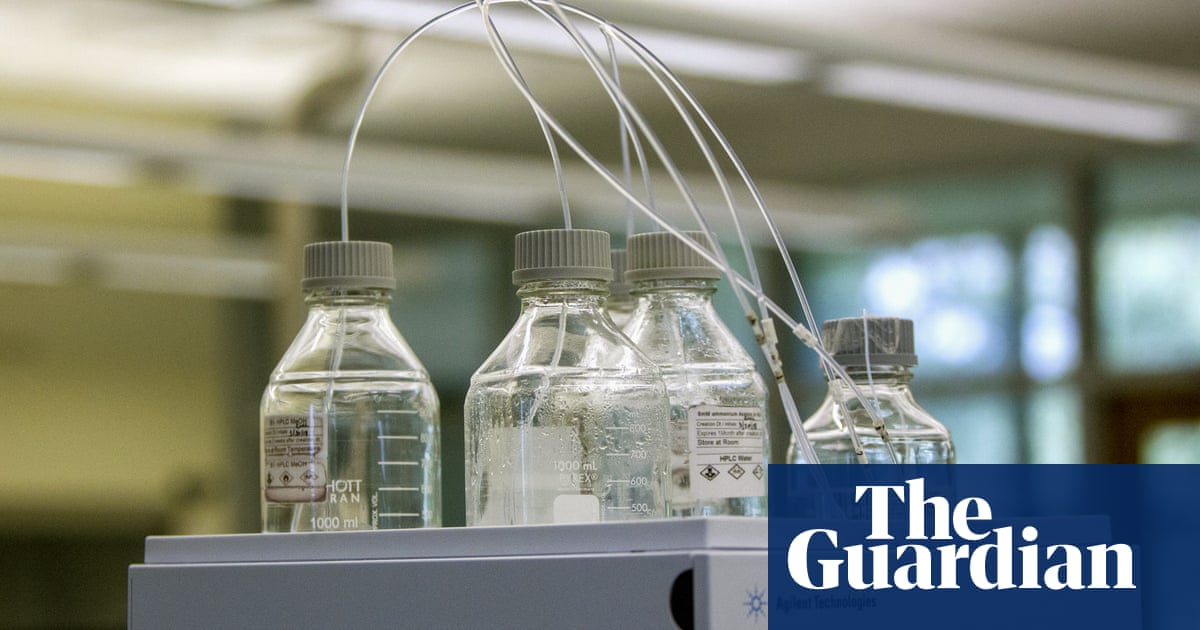
A new method for decomposing some PFAS compounds may represent a major breakthrough in addressing widespread environmental contamination across the world, according to research published on Thursday.
PFAS, or per and polyfluoroalkyl substances, are called “forever chemicals” because they do not naturally break down, and man-made processes that attempt to destroy them are expensive, energy intensive and have yielded questionable results.
Because PFAS don’t degrade, they steadily cycle through and accumulate in the environment, and the toxic chemicals are now thought to be contaminating drinking water supplies for over 200 million Americans. They’ve been detected in the Arctic, found in rain throughout the globe, and are estimated to be in 98% of Americans’ blood. New research has also found them in alarming levels in some food and the air.
Though technology to remove the PFAS from the environment exists, researchers until now have not yet figured out how to totally decompose the chemicals after removal.
The effectiveness of an emerging low temperature technique to break down PFAS is outlined in findings published on Thursday in Science. “The fundamental knowledge of how [PFAS] degrade is the single most important thing coming out of this study,” said Will Dichtel, a Northwestern University researcher and co-author of the new study.
The chemicals are often disposed of in methods that public health advocates have raised concerns about, like deep well injection or landfilling. They are also frequently incinerated, which evidence suggests only breaks apart the compounds, sending still dangerous pieces of PFAS into the air.
“There is no way to dispose of PFAS that is benign, so there is a need for a method to get rid of PFAS in a way that does not still pollute,” said Brittany Trang, a Northwestern researcher and one of the study’s lead authors.
PFAS are used to make thousands of consumer products across dozens of industries resist water, stains and heat. They are widely used because they are so effective, but those compounds that have been studied are linked to serious health issues like cancer, birth defects, liver disease, kidney problems, decreased immunity and high cholesterol.
About 12,000 compounds comprise the PFAS class, and the method developed by researchers from Northwestern, University of California at Los Angeles, and Tianjin University is effective on one subclass, perfluorocarboxylic acids. It includes compounds commonly produced by industry or found in the environment, including PFOA and PFBA, that are highly toxic at low levels and have been used in products like waxes and food packaging.
Every PFAS compound shares a common trait that has so far made them virtually indestructible – they have at least one carbon atom that is fluorinated. The new process “defluorinates” the compounds with a mixture of water and the dipolar aprotic solvent dimethyl sulfoxide (DMSO), leaving carbon and inorganic fluoride, two relatively harmless substances.
Researchers say they expect their method could be broadened to address PFAS in other subclasses. In contrast to other methods used to attempt to destroy the PFAS, this approach requires low levels of energy, researchers say.
“This method operates under mild conditions and makes benign products, and that makes it immediately promising for further study,” Dichtel said.
The findings are preliminary and the method is far from being ready to be scaled up and applied on a commercial level, researchers stressed. The chemicals are found in water at very low concentrations, though at levels that are toxic, so they would first have to be removed from contaminated water using reverse osmosis, granular activated carbon or other filtration. Once the chemicals are concentrated in wastewater, the new method could be used to treat them.
Dichtel, who said he has worked on developing methods to decompose PFAS for about seven years, called the findings “meaningful”.
“We have never had a satisfactory answer to ‘What we are going to do with these and how can we clean our water’?” Dichtel said.
Tell us what you think about the Guardian’s climate reporting – it takes just 2 minutes












